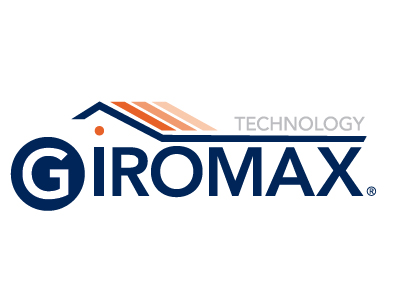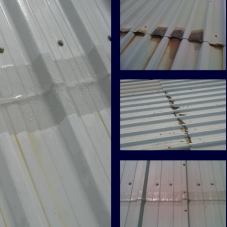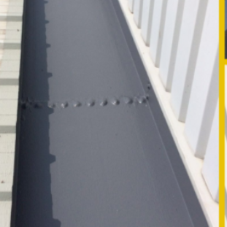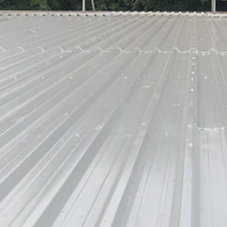Swedish Standards cover a huge variety of businesses and industries, setting out internationally recognised best practice guidelines. In this article, Giromax examine the Swedish Standard classifications for preparation, with a specific emphasis on preparing steel for coating products.
The Swedish Standards provide clear guidelines for making processes safer and more efficient. At the same time, they encourage the conserving of resources to reduce environmental impact.
The Standards for the preparation of steel surfaces prior to painting and coating have been widely adopted for many years.
It’s worth noting that the lifespan of an anti-corrosive coating over steel relies heavily on the thoroughness of how the surface is prepared before application.
Rust grades
The approved Standard classifications for preparation outline four specific grades of rusting, together with a number of preparation grades.
For the purposes of the Standard, surfaces are deemed to be hot-rolled steel in states of rust classified from A – D according to the following criteria:
Grade A – the surface of the steel is completely covered with adherent mill scale, showing little or no signs of any rust or oxidisation, and with no pitting.
Grade B – the surface of the steel has been exposed to the elements and shows signs of rusting, with the mill scale beginning to flake.
Grade C – the mill scale has rusted away from the surface of the steel, due to prolonged exposure to the elements. Any remaining mill scale can be easily scraped off, and early signs of surface pitting may be visible.
Grade D – exposure to the elements has rusted away all remnants of the mill scale, due to surface oxidisation. Signs of rust and pitting are clearly visible to the naked eye.
There are further classifications denoting the use of specific tools to restore the surface of the steel to a condition in which it can be coated.
A variety of abrasives and techniques are listed to grade the quality of the treatment and surface, as follows:
Hand and power tool cleaning
St 2 – The steel is scraped with a hard-metal scraper, wire brush or disc sander, to remove loose mill scale and rust. Once cleaned and dried, using a clean brush or compressed air, the steel should be left with a slight metallic sheen.
St 3 – A disc sander, power brush or other hand-held tool is used to thoroughly scrape away all traces of rust and mill scale. Once cleaned and dried the steel will have a definite metallic sheen.
Blasting with abrasives
Sa 0 – No surface preparation is undertaken.
Sa 1 - Light blast cleaning, in which the jet is moved quickly across the surface to remove loose mill scale and rust.
Sa 2 – Commercial blast cleaning. The jet is moved more slowly across the surface, removing all traces of mill scale and rust. The steel is then cleaned and dried thoroughly.
Sa 2.5 – Near-white blast cleaning. Mill scale and rust are removed so completely that slight shading on the surface is all that remains. The steel is then cleaned and dried thoroughly.
Sa 3 – White metal blast cleaning. The jet moves slowly across the surface, completely removing all traces of rust and mill scale. Once cleaned and dried the steel has a uniform metallic colour.
As an example of how the classification process works, a steel surface with a B grade for rust, when blast cleaned to a preparation grade of 2.5 would be given a rating of B Sa 2.5.
Preparing steel for coatings
Shotblasting Abrasive blasting is the preferred method for cleaning and descaling steel surfaces prior to the application of a protective coating. This encourages maximum adhesion as well as limiting the risk of any further corrosion taking place once the coating has been applied.
The aim is to provide a profile height that remains consistent across the steel, encouraging a uniformly ‘keyed’ surface. This ensures the coating can be evenly distributed, with superior staying power and a greatly reduced chance of hairline cracks appearing in the coating further down the line.
A prepared steel surface can quickly deteriorate when exposed to the elements. It’s essential to maintain the steel in a dry condition before applying the coating as soon as possible, or there may be a risk that further treatments might be necessary.
Choose the best coating for the job, which can cope with the damp British weather and can withstand the elements and environmental issues.
When it comes to preparation for a roof coating product, the Swedish Standard classifications for preparation are the preferred approach and will prolong the life of your roof coating.
Giromax® products will also help you to prolong the lifespan of commercial roofing systems. They offer innovative, market-leading solutions for cut edge corrosion and weather damage.
If you need advice on preparing roof systems or applying any of their product range, please speak to the Giromax team or call 01455 558969 today.
The Swedish Standard Classifications for Preparation
| T | 01455 558969 |
|---|---|
| E | sales@giromax.co.uk |
| W | Visit Giromax Technology's website |
| Eagle House, Bilton Way, Lutterworth, Leicestershire, LE17 4JA |
Products by this Company





